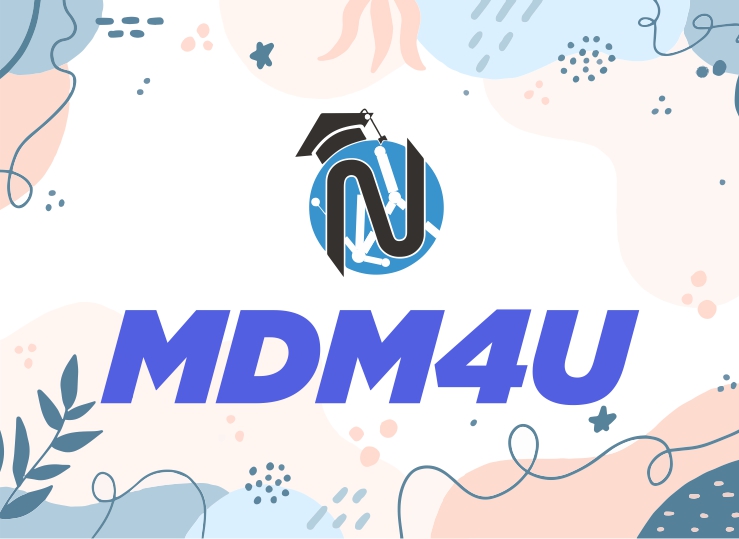
Mathematics of Data Management (MDM4U)
Course Description
This course broadens students’ understanding of mathematics as it relates to managing data. Students will apply methods for organizing and analysing large amounts of information; solve problems involving probability and statistics; and carry out a culminating investigation that integrates statistical concepts and skills. Students will also refine their use of the mathematical processes necessary for success in senior mathematics. Students planning to enter university programs in business, the social sciences, and the humanities will find this course of particular interest.
For Ministry Guideline Click Here
| Units | Descriptions | Length (Approximately) |
|---|---|---|
| 1. | Counting and Probability Students will solve problems involving the probability of an event or a combination of events for discrete sample spaces and will solve problems involving the application of permutations and combinations to determine the probability of an event. |
30 hours |
| 2. | Probability Distributions In this unit students demonstrate an understanding of discrete probability distributions, represent them numerically, graphically, and algebraically, determine expected values, and solve related problems from a variety of applications; demonstrate an understanding of continuous probability distributions, make connections to discrete probability distributions, determine standard deviations, describe key features of the normal distribution, and solve related problems from a variety of applications. |
20 hours |
| 3. | Organization of Data for Analysis Student will demonstrate an understanding of the role of data in statistical studies and the variability inherent in data, and distinguish different types of data; demonstrate an understanding of the role of data in statistical studies and the variability inherent in data, and distinguish different types of data |
25 hours |
| 4. | Statistical Analysis Student will analyze, interpret, and draw conclusions from one-variable data using numerical and graphical summaries; describe the characteristics of a good sample, some sampling techniques, and principles of primary data collection, and collect and organize data to solve a problem, demonstrate an understanding of the applications of data management used by the media and the advertising industry and in various occupations. |
25 hours |
| The final assessment task is to provide students to do Exam Review (4 Hrs) +Formative Exam (2 Hrs) +Culminating Task (2 Hrs) + Final Exam (2 Hrs) | 10 hours | |
| Total | 110 hours | |
Overall Curriculum Expectations
By the end of this course, students will:
- solve problems involving the probability of an event or a combination of events for discrete sample spaces.
- solve problems involving the application of permutations and combinations to determine the probability of an event
By the end of this course, students will:
- demonstrate an understanding of discrete probability distributions, represent them numerically, graphically, and algebraically, determine expected values, and solve related problems from a variety of applications.
- demonstrate an understanding of continuous probability distributions, make connections to discrete probability distributions, determine standard deviations, describe key features of the normal distribution, and solve related problems from a variety of applications.
By the end of this course, students will:
- demonstrate an understanding of the role of data in statistical studies and the variability inherent in data and distinguish different types of data.
- describe the characteristics of a good sample, some sampling techniques, and principles of primary data collection, and collect and organize data to solve a problem.
By the end of this course, students will:
- analyse, interpret, and draw conclusions from one-variable data using numerical and graphical summaries.
- analyse, interpret, and draw conclusions from two-variable data using numerical, graphical, and algebraic summaries.
- demonstrate an understanding of the applications of data management used by the media and the advertising industry and in various occupations.
By the end of this course, students will:
- design and carry out a culminating investigation* that requires the integration and application of the knowledge and skills related to the expectations of this course.
- communicate the findings of a culminating investigation and provide constructive critiques of the investigations of others.
Assessment & Evaluation of student performance
Formative assessments are learning practices that provide important feedback to student progress. Examples include homework and quizzes.
Summative assessments form a foundation for final mark allotment at the end of the unit, term and final evaluation.
An achievement chart will be given to students at regular intervals and the purpose of the charts is to provide feedback to students in relation to content and performance strands.
| Knowledge and understanding | Communication | Thinking Inquiry and Problem solving | Application |
|---|---|---|---|
| 25% | 25% | 25% | 25% |
Unit Tests, Written assignments, presentations, Classroom Observations and Classroom conversations.










